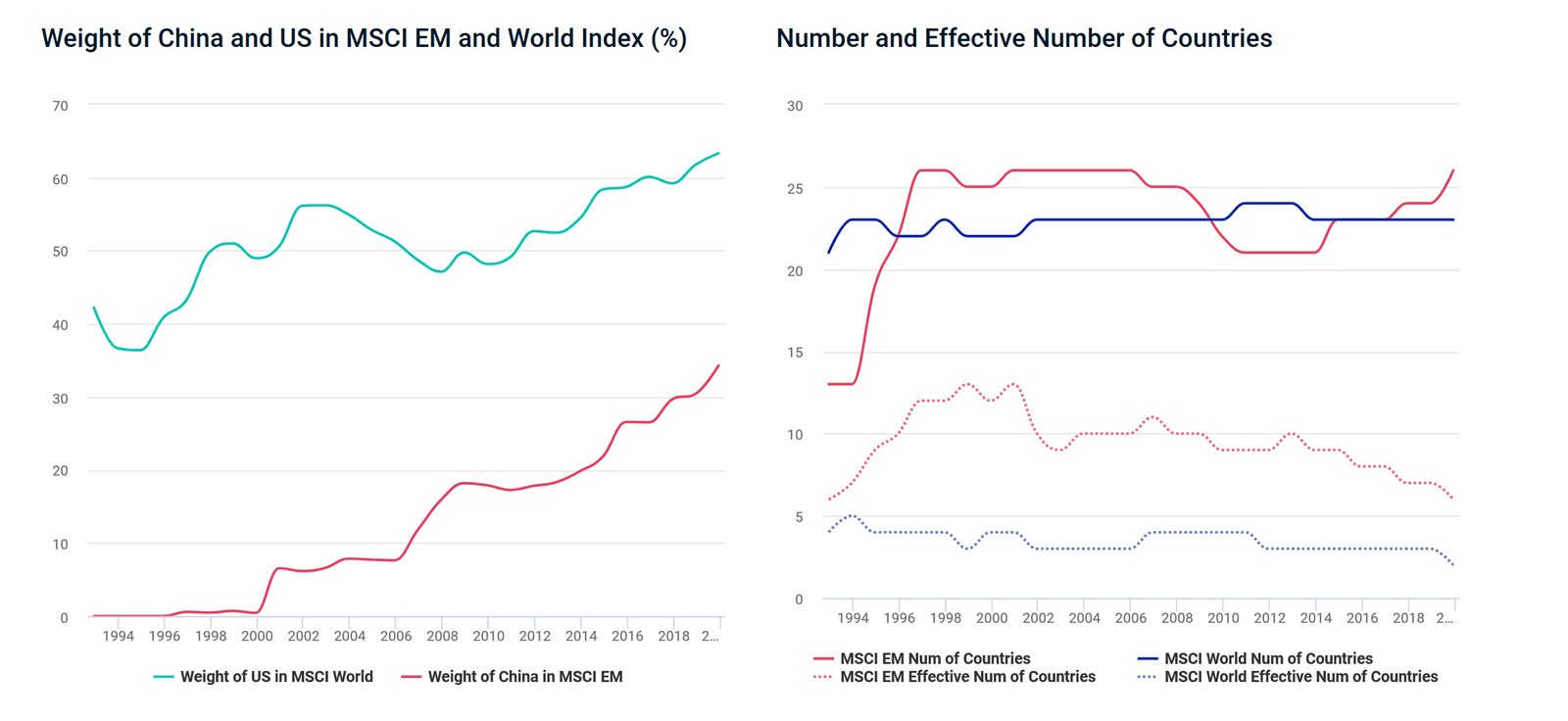Concentration Through a Country Lens: Impact on Regional Diversification
Just as country indexes can become concentrated in a handful of stocks, the same can happen with regions. The first chart below shows the increased dominance of the U.S. in the MSCI World Index and China in the MSCI Emerging Markets (EM) Index. The increased concentration reflects the growth of the underlying constituents and countries.
To assess the impact on diversification in these regional indexes, investors can also look at the effective number of countries, which shows how many countries are "effectively" driving risk and performance versus the total number of countries in an index. The bigger the difference between the effective number and the number of countries, the more concentrated the index.
The second chart shows this in stark relief. At first, including China and others increased diversification, raising both the total and effective number of countries in the MSCI EM Index. More recently, however, the increased weight of China in the index reduced the effective number. Country concentration in the MSCI World Index, though quite high, has remained fairly stable until the recent uptick in the U.S.'s weight. Despite the increase in concentration in EM, the MSCI EM Index has been, and still is, less concentrated than MSCI World.
Active investors under-exposed to the U.S. or China may find it harder to outperform if the countries continue to do well, while an underweight may help if performance falters. Either way: concentration matters. Also, the performance of regional indexed portfolios will be increasingly driven by the two countries if their weights increase, potentially reducing the benefits of regional diversification.

Data from Dec. 31, 1992, to Dec. 31, 2019.
Subscribe todayto have insights delivered to your inbox.
Global Investing Trends
Investing globally can help investors work toward global diversification, tap into new opportunities for growth and harness the potential in the rise in importance of emerging markets.
Dispersion in Equity Markets
When stock returns are more spread out, that creates more opportunities for active managers. When dispersion of returns is tighter, there are fewer opportunities.
Emerging Markets and ACWI Economic Exposure
Just 15 years ago, corporate revenues from emerging markets (EM) represented around 10% of global revenues.
The content of this page is for informational purposes only and is intended for institutional professionals with the analytical resources and tools necessary to interpret any performance information. Nothing herein is intended to recommend any product, tool or service. For all references to laws, rules or regulations, please note that the information is provided “as is” and does not constitute legal advice or any binding interpretation. Any approach to comply with regulatory or policy initiatives should be discussed with your own legal counsel and/or the relevant competent authority, as needed.
